How Long Does It Take to Learn CSS Basics? This is the first thing beginners ask at the onset of web design. CSS stands for Cascading Style Sheets and this is what provides the websites’ appearance and style. When you have HTML knowledge, the next step is CSS. It can alter colors, define fonts, and align layouts.
You are wondering whether you take weeks or even months to learn. The reality relies upon the time you dedicate and the way you learn. With constant practice and the proper method, one can easily learn CSS basics quicker than you imagine.
What Counts as CSS Basics?

When people talk about CSS basics, they usually mean the foundation that allows you to style a web page. At the very start you will learn about selectors, properties, and values. A selector is what you target on the page, like a heading or paragraph. A property is what you want to change, such as color or font size. The value tells CSS how to change it, like making the text red or bold.
Other basic areas include colors, fonts, spacing, borders, and the box model. The box model is how every element on a web page is structured with margins, padding, borders, and content. You will also need to know how to position elements and how to use simple responsive design with media queries. These are the essentials that most learners cover in the first few weeks.
You will like this: How Does Technology Help Students Learn Financial Literacy With Graphs
Average Time Needed to Learn CSS Basics
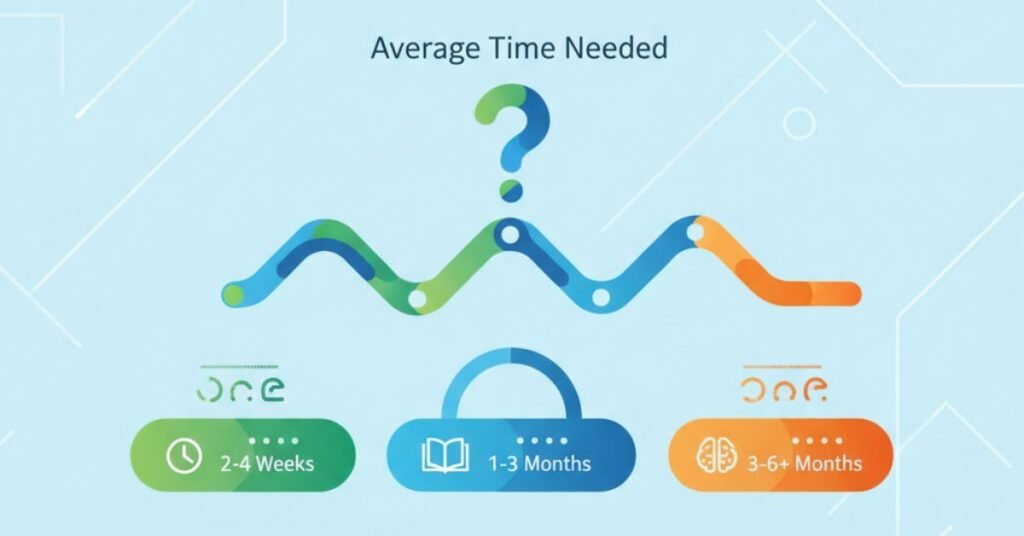
The time it takes depends on your starting point. If you already know HTML, you can move through CSS basics in about two to three weeks with daily practice. If you are brand new to coding, it may take one to two months before you feel comfortable.
Here is a simple table to give you an idea of the timeline:
| Learner Type | Daily Practice Time | Average Learning Time |
| Complete Beginner | 1 hour | 6–8 weeks |
| Knows HTML | 1 hour | 3–4 weeks |
| Prior Coding Experience | 1 hour | 2–3 weeks |
Factors That Influence Learning Speed
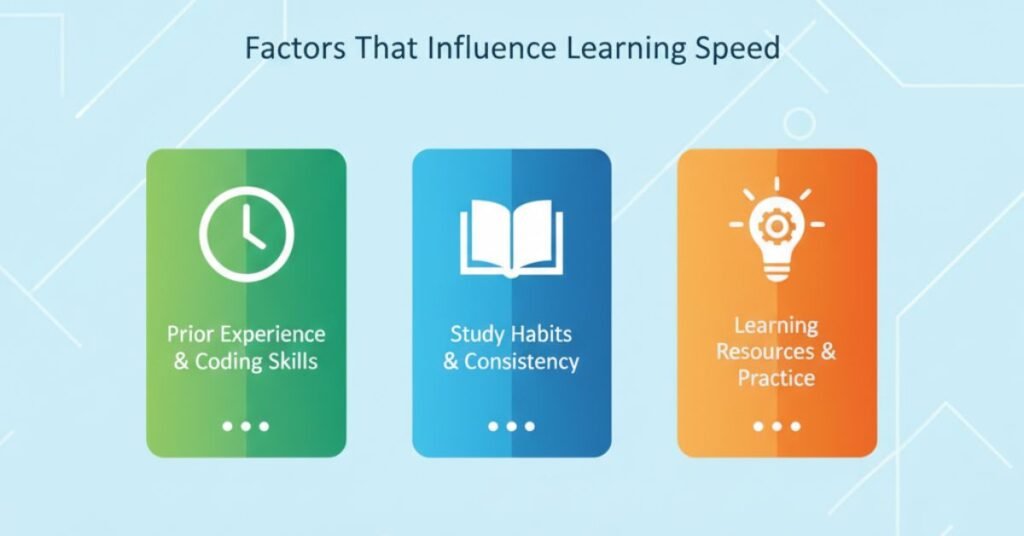
The speed of learning CSS is different for everyone. If you already know HTML, then CSS will feel natural. If you have coded before in any language, you may also learn faster. Your learning style matters too. Some people learn best with video tutorials while others prefer books or interactive platforms.
The amount of time you dedicate each week is another factor. Someone who practices one hour a day will learn faster than someone who practices only on weekends. Motivation plays a role as well. If you set goals like styling your own blog, you will stay focused. On the other hand, if you only read without practice, your progress will be slow.
Step-by-Step Learning Path for CSS Basics
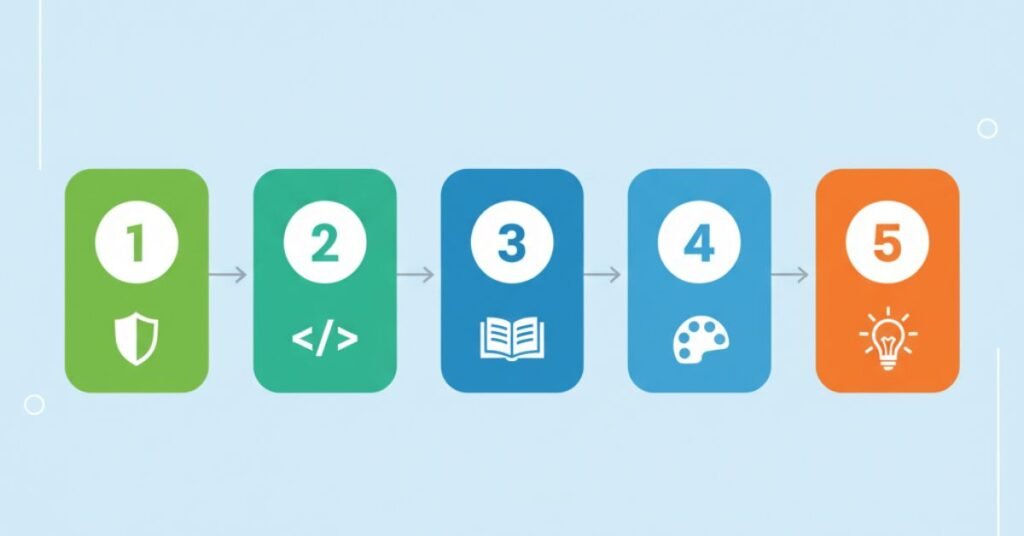
A structured learning plan helps you move faster. In the first week, you should focus on CSS syntax, selectors, and simple text formatting. This is the foundation that everything else builds on.
By the second week, you can move on to colors, backgrounds, and spacing. The third week is the right time to practice the box model, margins, and positioning. By the fourth week, you should be learning responsive design with media queries. At the end of four weeks, you can build small projects like a personal web page or a simple landing page.
Read more: Is Cyber Security Hard to Learn?
Best Resources to Learn CSS Basics
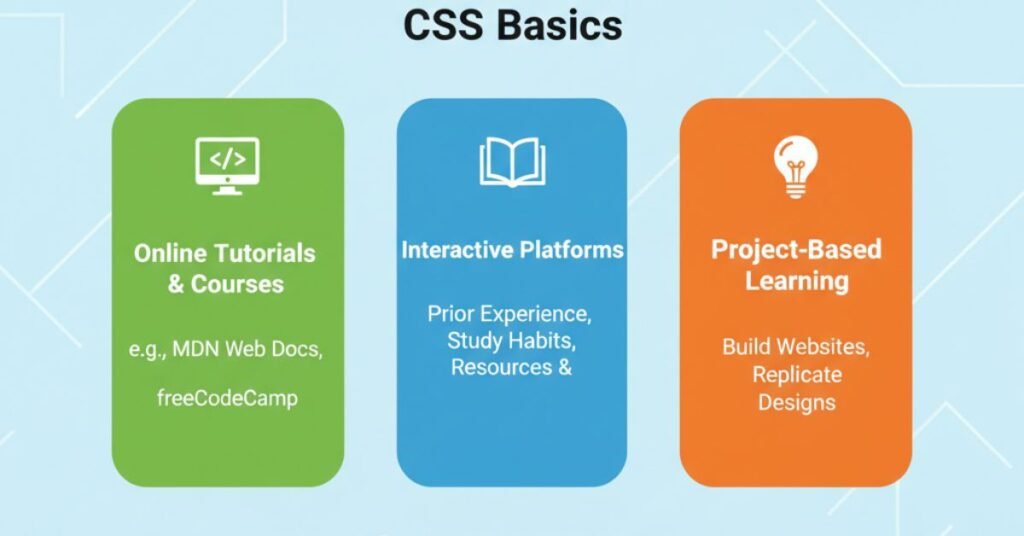
Learning CSS is easier when you use the right resources. There are many free and paid platforms that can guide you step by step. The choice depends on how you like to learn. If you enjoy reading, documentation and articles will be helpful. If you like hands-on coding, interactive platforms are a better choice.
Here is a table comparing some of the best options for learning CSS basics:
| Resource | Type of Learning | Best For | Cost |
| MDN Web Docs | Documentation and guides | Learners who prefer detailed explanations | Free |
| freeCodeCamp | Interactive challenges | Beginners who want structured lessons | Free |
| W3Schools | Tutorials with examples | Quick learners who like trying code directly | Free |
| Udemy CSS Courses | Video courses | Learners who prefer guided teaching | Paid |
| CSS-Tricks | Articles and tips | Those who want advanced tricks and design ideas | Free |
Real-Life Case Studies and Learning Journeys
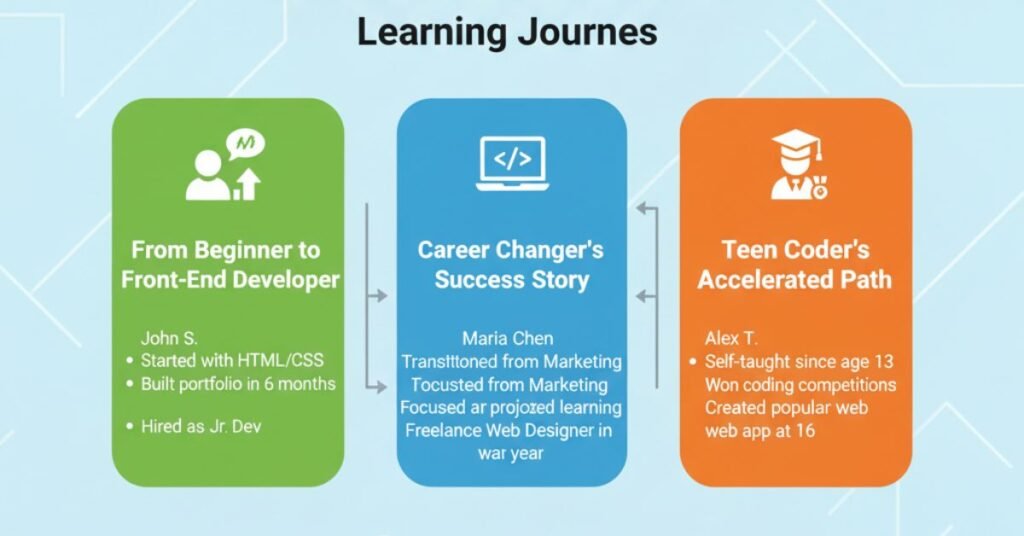
Learning timelines vary for each person. Sarah, a beginner with no coding background, learned CSS basics in six weeks by practicing one hour daily. She built her first blog layout at the end of her journey.
David, on the other hand, already knew HTML. He completed the basics in just three weeks. He built a responsive portfolio page to showcase his work. Another example is Mia, who had prior coding experience in Python. She picked up CSS basics in just two weeks because she already understood logic and syntax. These stories show that your background shapes your timeline.
Why Learning CSS Basics Matters for Your Future
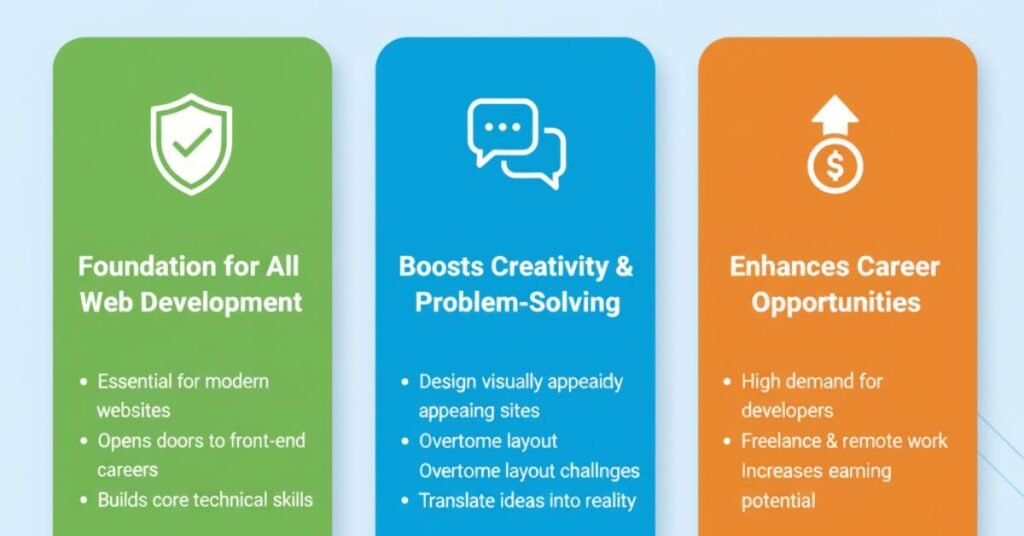
It is easy to think CSS is just about colors and fonts, but it is much more than that. CSS is the language that controls the design of every website you see online. Without it, the internet would look plain and boring. Knowing how to style pages makes you stand out as a web designer or front-end developer.
If you want to build a career in tech, CSS basics are the first real skill that gives you visible results. Even if you are not going into tech, CSS is useful. Bloggers, small business owners, and students can all benefit. Imagine being able to create a personal site without hiring a developer. That freedom starts with CSS basics.
How to Stay Motivated While Learning CSS
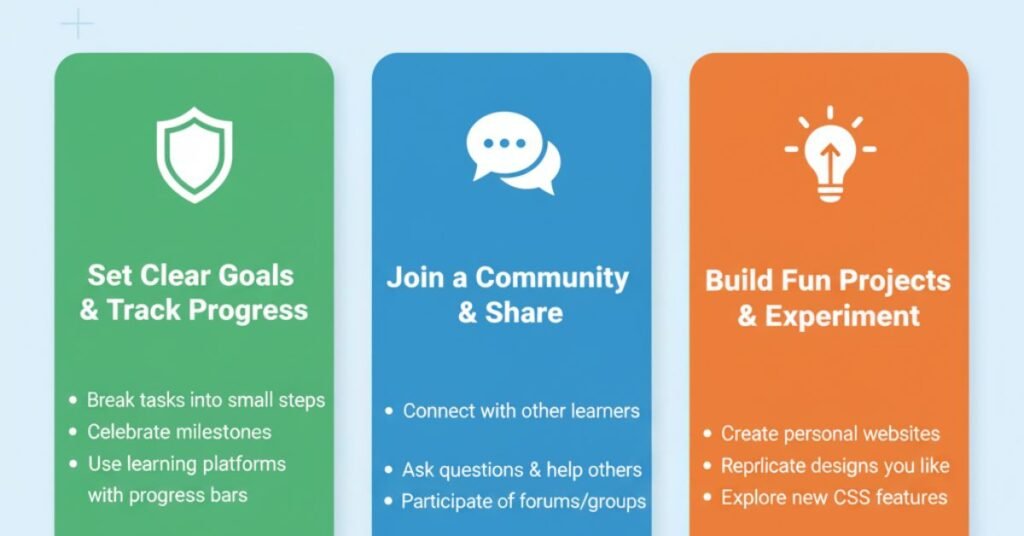
Many people start learning CSS but stop halfway because they lose motivation. The trick is to set small, clear goals. Instead of saying, “I will learn all of CSS,” set a goal like, “I will style my homepage header this week.” Smaller goals keep you moving forward.
Another way to stay motivated is to join communities. You can find groups on Reddit, Discord, or GitHub where people share projects and help each other. Seeing how others solve problems makes you want to keep going. Also, remember to celebrate small wins. Every time your code works, it is a step closer to mastering CSS.
Practical Projects to Apply CSS Basics
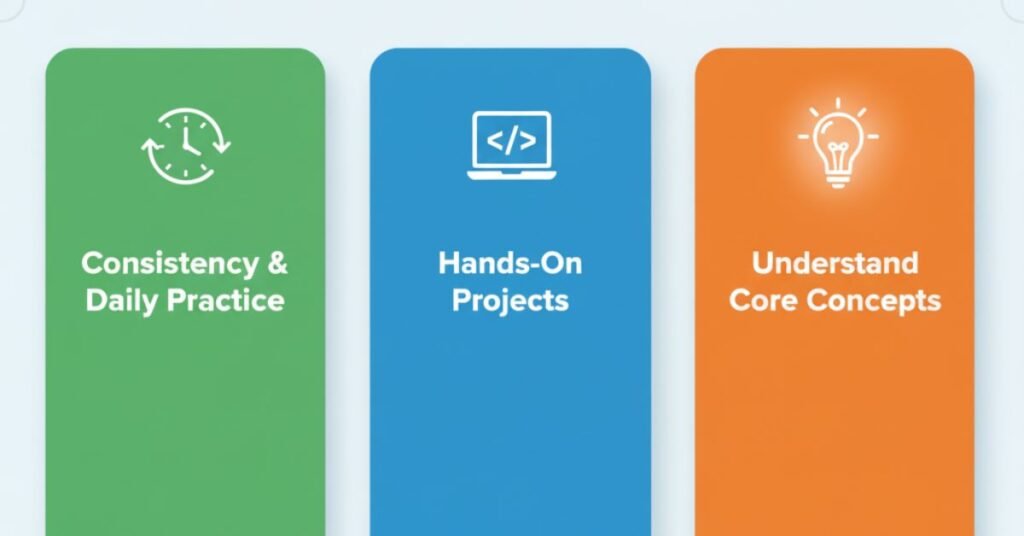
Knowing theory is not enough. You must use CSS on real projects. A good start is to build a simple personal webpage where you style headings, paragraphs, and images. Another project is a blog layout where you experiment with fonts and spacing. A third option is creating a responsive landing page that works on both desktop and mobile.
Here is a table with project ideas and the skills they test:
| Project Idea | Skills Practiced |
| Personal Webpage | Selectors, colors, fonts |
| Blog Layout | Box model, spacing, alignment |
| Responsive Landing Page | Media queries, flexible units |
Proven Tips to Learn CSS Basics Faster
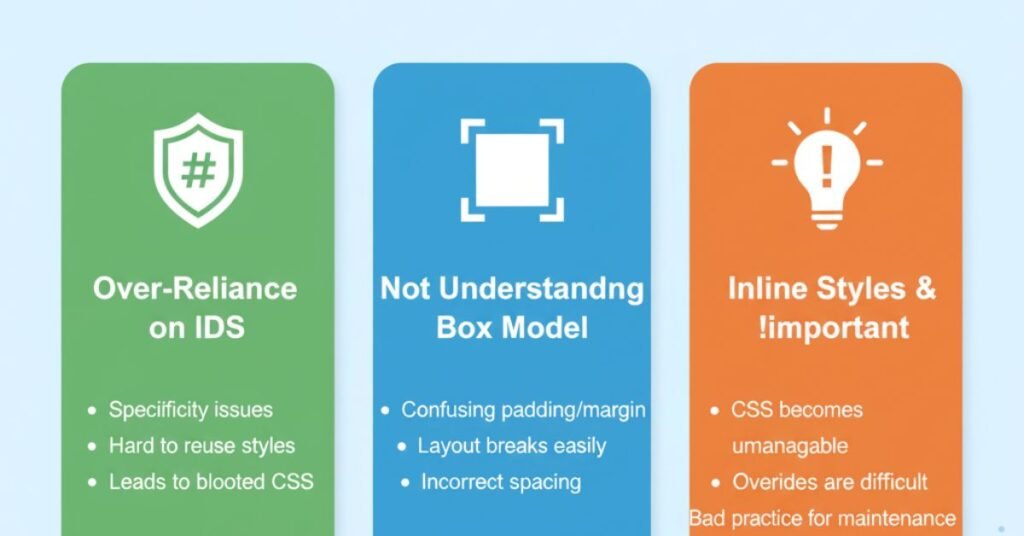
One of the fastest ways to learn is to practice daily, even for just 30 minutes. Reading or watching tutorials without coding slows you down. Always write your own code.
You can also speed up learning by using platforms like freeCodeCamp or CSS-Tricks. These sites give you interactive challenges that make learning fun. Another tip is to break your study into small projects instead of trying to build something huge. This keeps you motivated and avoids burnout.
Common Mistakes Beginners Make with CSS
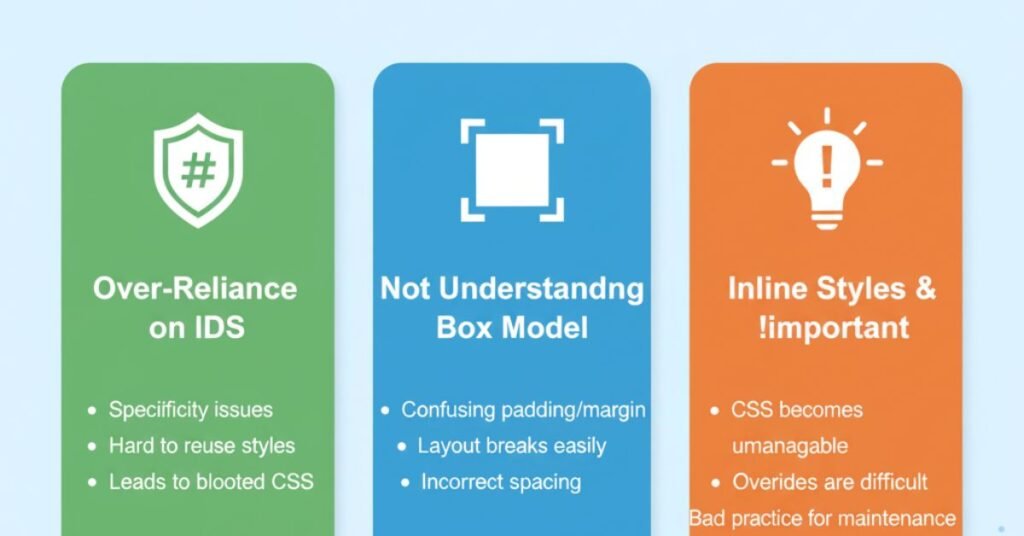
Beginners often make mistakes that slow down their learning. One common mistake is overcomplicating selectors. Simple is usually better. Another mistake is ignoring responsive design from the start. It is better to learn mobile-friendly CSS early on.
Many learners also copy and paste code without understanding what it does. This may work in the short term, but it does not help you learn. Another mistake is rushing into frameworks like Bootstrap before mastering the basics. Frameworks are powerful, but without a strong CSS foundation, you will struggle.
FAQ’’S
How long does it take to learn CSS basics if I study part-time?
If you study three times a week for one hour each, it may take two months.
Can I learn CSS without knowing HTML?
You can start CSS, but HTML is required for practice. It is best to learn HTML first.
Do I need math skills to learn CSS?
No, CSS is about design. Basic math helps with percentages and units, but it is simple.
Is CSS enough to build a website?
No, you also need HTML for structure and often JavaScript for interactions.
What is the best way to practice CSS basics?
The best way is to build small projects like blogs, portfolios, or landing pages.
Conclusion
So, how long does it take to learn CSS basics? The answer depends on you. With daily practice, you can learn the basics in about three to six weeks. If you practice less, it may take longer. What matters most is consistency, practice, and building real projects. Once you finish the basics, you can move on to advanced topics like animations and frameworks. CSS is not hard, but it does take time and patience. Keep coding daily and soon you will be styling pages with confidence.




